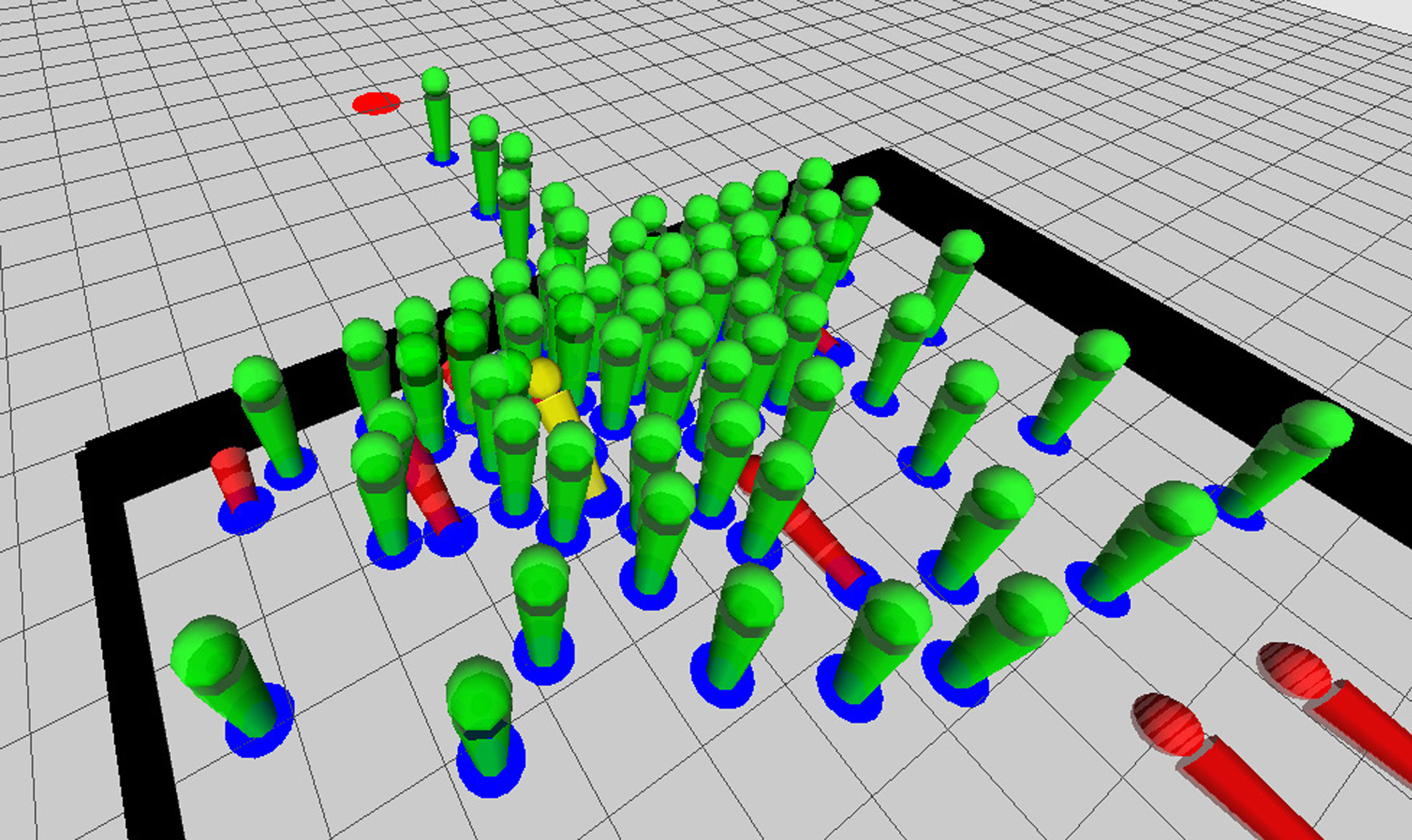“Simulating crowds with balance dynamics” by Brogan and Ratner
Conference:
Type(s):
Title:
- Simulating crowds with balance dynamics
Presenter(s)/Author(s):
Abstract:
The dynamics of walking dramatically influences the behaviors of pedestrians, yet few details of human biomechanics and walking control are addressed in crowd animations developed for virtual environments and scientific applications. People cannot stop or start instantaneously and their movements reflect an attention to balance as well as other environment-driven goals. This work seeks to fill the void between full-scale, computationally expensive models of articulated human motion and simplified particle/cell models used in many multiagent simulations. Comparison of our pedestrian model results with those published elsewhere reveals that this work preserves phenomena like self-organization, lane formation, and semi-circular crowding at exits [Helbing et al. 2002]. Furthermore, our pedestrian model enables novel behaviors such as tripping, stumbling, and falling which permit animating more extreme scenarios; for example, earthquakes, where translational forces significantly affect pedestrian and crowd dynamics.
References:
1. Brogan, D., and Johnson, N. 2003. Realistic human walking paths. Computer Animation and Social Agents, 94–101.
2. Helbing, D., Farkas, I. J., Molnar, P., and Vicsek, T. 2002. Simulation of pedestrian crowds in normal and evacuation situations. Pedestrian and Evacuation Dynamics, 21–58.





